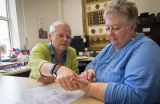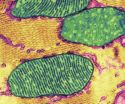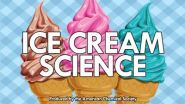(Press-News.org) Nice, France, 17 June 2014. The EHRA (European Heart Rhythm Association) White Book 2014 will be officially launched at the CARDIOSTIM EHRA EUROPACE 2014 congress which starts today in Nice, France.
The White Book reports on the current status of arrhythmia treatment in 49 of the 56 European Society of Cardiology (ESC) member countries for the year 2013. The new White Book is published in electronic format only and will be distributed on a USB stick as well as being available on the EHRA website. As a new feature, the USB stick contains complete data also from the six previous editions of the White Book.
EHRA White Book co-coordinator Dr David O. Arnar (Iceland) said: "The EHRA White Book has become an important annual reference of the status of treatment of arrhythmias as well as to assess the availability of therapies for heart rhythm abnormalities in the ESC countries. The data collection is the result of voluntary participation by the EP Working groups of the National Cardiac Societies and we are indebted to our collaborators that provided us with this valuable information."
The White Book contains data on the use of cardiovascular implantable electronic devices (CIEDs) including pacemakers, implantable cardiac defibrillators (ICDs), cardiac resynchronization therapy (CRT) devices, and lead extractions procedures in Europe.
According to Dr. Arnar lead extraction has become increasingly important as the number of individuals with transvenous CIED leads continues to expand. The leads are the most delicate part of the CIED system and in many cases they need to be replaced either due to damage, malfunction or infection, because of the limited capacity for leads in the venous system.
As in previous years the highest number of CIED implantations and ablations was in Germany (total procedures 163.040), Italy (90.602), United Kingdom (78.081), France (60.000) and Russia (58.825). However, the White Book data reveal a large range in the number of CIED implantations and ablations in the ESC member countries.
The countries with the lowest combined number of CIED implants and ablations were in San Marino (349), Armenia (278), Moldova (287), Montenegro (299) and Malta (329). There were some countries, such as Kazakhstan, that reported a surge in the number of CRT devices, ICDs and loop recorders. The use of loop recorders is on the rise, but this device is important for diagnostic purposes and allows physicians to follow the results of interventions such as ablations.
Italy had the biggest increase in the use of loop recorders over one year, from 2500 in 2012 to 3700 in 2013. Also interesting is the trend for use of CRT defibrillators instead of CRT pacemakers, which is illustrated by the data from Belgium.
EHRA White Book Coordinator Professor Pekka Raatikainen (Finland) said: "White Book data confirm that implantable devices and catheter ablation have become key components in the treatment of tachy- and bradyarrhythmias. There is a continued increase in complex therapeutic interventions such as atrial fibrillation ablation and CRT implantation in most countries. On the other hand, a large disparity in the availability and use of these treatments still exists across Europe. This is of concern and therefore one of the major goals of EHRA is to reduce this gap".
Another important feature of the White Book is an assessment of obstacles to implementation of guidelines for arrhythmia care across Europe. The White Book presents data by country and compares it to the previous year´s statistics. Further analysis and graphic presentation of the White Book data with interpretations from experts in the field will be published in a dedicated supplement of EHRA's official journal EP Europace later this year.
"The presentation of the data in the supplement will allow us to readily compare activities between countries and show how utilization of treatment has changed over time," said Prof. Raatikainen. "It will thus serve as a benchmark and pinpoint the inequalities in access to specialized arrhythmia care in Europe."
"We hope to expand next year's data collection to include ventricular tachycardia ablations. This is the next frontier in ablation therapy. While many of these patients already have an ICD there is a growing need to provide treatment options which reduce the ventricular tachycardia burden in this population," Dr. Arnar added.
INFORMATION:
EHRA White Book 2014 highlights growing use of complex therapies for heart rhythm abnormalities
Current status of arrhythmia treatment in 49 European countries
2014-06-17
ELSE PRESS RELEASES FROM THIS DATE:
Distracted minds still see blurred lines
2014-06-17
VIDEO:
Participants were asked to look at an image with moving sections blurred, while performing a cognitive 'n-back' task.
Click here for more information.
Montreal, June 17, 2014 — From animated ads on Main Street to downtown intersections packed with pedestrians, the eyes of urban drivers have much to see. But while city streets have become increasingly crowded with distractions, our ability to process visual information has remained unchanged for millions of years. ...
Pain pilot explores hand shiatsu treatment as sleep aid
2014-06-17
(Edmonton) There was a time, back in Nancy Cheyne's youth, when she combined the poise and grace of a ballerina with the daring and grit of a barrel racer. When she wasn't pursuing either of those pastimes, she bred sheepdogs, often spending hours on her feet grooming her furry friends at dog shows.
All that seems like a lifetime ago. After 15 years of living with chronic lower-back pain, Cheyne, 64, can't walk from the disabled parking stall to the elevator at work without stopping for a rest. She eats mostly junk food because it hurts too much to stand over the stove ...
Single dose reverses autism-like symptoms in mice
2014-06-17
In a further test of a novel theory that suggests autism is the consequence of abnormal cell communication, researchers at the University of California, San Diego School of Medicine report that an almost century-old drug approved for treating sleeping sickness also restores normal cellular signaling in a mouse model of autism, reversing symptoms of the neurological disorder in animals that were the human biological age equivalent of 30 years old.
The findings, published in the June 17, 2014 online issue of Translational Psychiatry, follow up on similar research published ...
Breast cancer diagnosis, mammography improved by considering patient risk: INFORMS paper
2014-06-17
A new approach to examining mammograms that takes into account a woman's health risk profile would reduce the number of cancer instances missed and also cut the number of false positives, according to a paper being presented at a conference of the Institute for Operations Research and the Management Sciences (INFORMS).
Mehmet U.S. Ayvaci of the University of Texas Dallas will present his research group's findings about the role of risk profiling in the interpretation of mammograms at Advances in Decision Analysis, a conference sponsored by the INFORMS Decision Analysis ...
Boost for dopamine packaging protects brain in Parkinson's model
2014-06-17
Researchers from Emory's Rollins School of Public Health discovered that an increase in the protein that helps store dopamine, a critical brain chemical, led to enhanced dopamine neurotransmission and protection from a Parkinson's disease-related neurotoxin in mice.
Dopamine and related neurotransmitters are stored in small storage packages called vesicles by the vesicular monoamine transporter (VMAT2). When released from these packages dopamine can help regulate movement, pleasure, and emotional response. Low dopamine levels are associated with neurodegenerative diseases ...
Gut bacteria predict survival after stem cell transplant, study shows
2014-06-17
(WASHINGTON, June 17, 2014) – New research, published online today in Blood, the Journal of the American Society of Hematology, suggests that the diversity of bacteria in the gastrointestinal tract of patients receiving stem cell transplants may be an important predictor of their post-transplant survival.
A healthy gastrointestinal tract contains a balanced community of microorganisms (known as microbiota), largely comprised of "friendly" bacteria that aid digestion and are important to immune system function. When this community of microbes is compromised, the microbiota ...
Ice cream chemistry: The inside scoop on a classic summer treat (video)
2014-06-17
WASHINGTON, June 17, 2014 — The summer weather is here, and if you've been out in the sun, you're probably craving some ice cream to cool off. In the American Chemical Society's latest Reactions video, American University Assistant Professor Matt Hartings, Ph.D., breaks down the chemistry of this favorite frozen treat, including what makes ice cream creamy or crunchy, and why it is so sweet. The video is available at http://youtu.be/-rlapUkWCSM
INFORMATION:
Subscribe to the series at Reactions YouTube, and follow us on Twitter @ACSreactions to be the first to see our ...
Climate change deflecting attention from biodiversity loss
2014-06-17
New research from the University of Kent suggests that recent high levels of media coverage for climate change may have deflected attention and funding from biodiversity loss.
In a paper published by the journal Bioscience, Kent conservationists also recommend that, to prevent biodiversity from becoming a declining priority, conservationists need to leverage the importance of climate change to obtain more funds and draw attention to other research areas such as biodiversity conservation.
For the study, the team conducted a content analysis of newspaper coverage in ...
Crowdsourcing the phase problem
2014-06-17
Compared with humans, computers have the capacity to solve problems at much greater speed. There are many problems, however, where computational speed alone is insufficient to find a correct or optimal solution, for example because the parameter "space" cannot be fully searched in a practical time. In contrast, the human mind can formulate expert knowledge specific for particular problems, providing a capacity to guide more efficient searches, although with more limited processing speed.
The power of the human contribution can be multiplied through the efforts of a greater ...
Genetic pathway can slow spread of ovarian cancer
2014-06-17
University of Adelaide research into the origins of ovarian cancer has led to the discovery of a genetic pathway that could slow the spread of the cancer.
The discovery is in part due to research into the genetics of humans' most distant mammalian relative, the platypus.
In a paper published today in the journal PLOS ONE, researchers characterize a genetic pathway – involving piRNA genes – that is turned on in ovarian cancer.
"This pathway is important for the development of the ovaries in drosophila flies but little is known about its role in the mammalian ovary," ...
LAST 30 PRESS RELEASES:
Making lighter work of calculating fluid and heat flow
Normalizing blood sugar can halve heart attack risk
Lowering blood sugar cuts heart attack risk in people with prediabetes
Study links genetic variants to risk of blinding eye disease in premature infants
Non-opioid ‘pain sponge’ therapy halts cartilage degeneration and relieves chronic pain
AI can pick up cultural values by mimicking how kids learn
China’s ecological redlines offer fast track to 30 x 30 global conservation goal
Invisible indoor threats: emerging household contaminants and their growing risks to human health
Adding antibody treatment to chemo boosts outcomes for children with rare cancer
Germline pathogenic variants among women without a history of breast cancer
Tanning beds triple melanoma risk, potentially causing broad DNA damage
Unique bond identified as key to viral infection speed
Indoor tanning makes youthful skin much older on a genetic level
Mouse model sheds new light on the causes and potential solutions to human GI problems linked to muscular dystrophy
The Journal of Nuclear Medicine ahead-of-print tip sheet: December 12, 2025
Smarter tools for peering into the microscopic world
Applications open for funding to conduct research in the Kinsey Institute archives
Global measure underestimates the severity of food insecurity
Child survivors of critical illness are missing out on timely follow up care
Risk-based vs annual breast cancer screening / the WISDOM randomized clinical trial
University of Toronto launches Electric Vehicle Innovation Ontario to accelerate advanced EV technologies and build Canada’s innovation advantage
Early relapse predicts poor outcomes in aggressive blood cancer
American College of Lifestyle Medicine applauds two CMS models aligned with lifestyle medicine practice and reimbursement
Clinical trial finds cannabis use not a barrier to quitting nicotine vaping
Supplemental nutrition assistance program policies and food insecurity
Switching immune cells to “night mode” could limit damage after a heart attack, study suggests
URI-based Global RIghts Project report spotlights continued troubling trends in worldwide inhumane treatment
Neutrophils are less aggressive at night, explaining why nighttime heart attacks cause less damage than daytime events
Menopausal hormone therapy may not pose breast cancer risk for women with BRCA mutations
Mobile health tool may improve quality of life for adolescent and young adult breast cancer survivors
[Press-News.org] EHRA White Book 2014 highlights growing use of complex therapies for heart rhythm abnormalitiesCurrent status of arrhythmia treatment in 49 European countries




